About Kozhikode
 Calicut is the anglicised form of Kalikut. The Arabic for the Malayalam , Kozhikode. It is also called the Cock Fort. According to the historian, K.V Krishnan Iyer, the term means koyil (Palace) Kodu (Fortified). Anyhow, it is a historical town with a hoary past. From time immemorial, the city attracted travellers, with its charming physical features and prosperity. Even today , the glory that was Calicut has not faded. The political history of Kozhikode is a story of treacherous and ill conceived conspiracies hatched by the Western powers. Vasco De Gama landed at Kappad in May 1498, as the leaders of a trade mission from Portugal and was received by the Zamorin himself.
Calicut is the anglicised form of Kalikut. The Arabic for the Malayalam , Kozhikode. It is also called the Cock Fort. According to the historian, K.V Krishnan Iyer, the term means koyil (Palace) Kodu (Fortified). Anyhow, it is a historical town with a hoary past. From time immemorial, the city attracted travellers, with its charming physical features and prosperity. Even today , the glory that was Calicut has not faded. The political history of Kozhikode is a story of treacherous and ill conceived conspiracies hatched by the Western powers. Vasco De Gama landed at Kappad in May 1498, as the leaders of a trade mission from Portugal and was received by the Zamorin himself.
The history of Kozhikode district as an administrative unit begins from January 1957. When the states of the Indian Union were reorganised on linguistic basis on 1st November, 1956, the erstwhile Malabar district was separated from Madras state (Tamil Nadu) and added to the new unilingual state of Kerala. But malabar district was found to be too unwieldy for administrative purposes. Consequently the state government ordered the formation of three districts with certain changes in the boundaries of some of the taluks. The Kozhikode district thus came into existence on 1st January 1957,orginally consisting of five taluks, Viz, Vadakara, Koyilandy, Kozhikode, Ernad & Tirur. With the formation of malapuram district on 1st june 1969 & Wayandu on 1st November 1980, kozhikode district now consist of one revenue division , three taluks, twelve blocks, 78 panchayats and 117 villages.
The city is surrounded by a lush green country side, rivers, scenic hills, beautiful beaches, historic sites and wildlife sanctuaries. Travellers like Marco Polo, the Italian Nicola de Conti, the Russian Afanas and the Arab Ibn Batuta mention Calicut in their travel writings. Kozhikode is the third most populous city of Kerala State. The city was traditionally known as the 'city of spices' for its trade in pepper, cardamom, cinnamon and ginger. In fact the Portuguese sailor Vasco da Gama landed in 1498 at a beach near Calicut when he came searching for the spices of India. Kozhikode was traditionally ruled by the powerful Zamorins. Their descendants still live in the city.
Places to visit
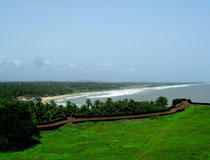
Beypore beach
Beypore beach, is located in Kozhikode at the mouth of the Chaliyar River. Historically, it has a special place as being one of the prominent ports and fishing harbours, and was also an important trade and maritime centre during the days of the early Arab and Chinese travellers and later the Europeans. Soon after gaining prominence as a port and trade centre, Beypore slowly began to flourish as a centre for shipbuilding, since ships were in great demand merchants from Western Asia. The shipbuilding yard at Beypore port is famous for its traditional construction of the Uru or the Arabian trading vessel. This tradition of shipbuilding is nearly 1,500 years old, and the craftsmanship of the workers here is exceptional.
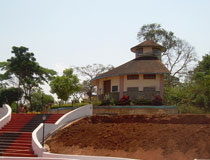
Pazhassiraja Museum
A veritable treasure trove for historians and connoisseurs of art, the Pazhassiraja Museum is located in Kozhikode - the land of spices which lured navigators from time immemorial down to the Portuguese explorer Vasco da Gama in 1498. The Pazhassi Raja Museum & Art Gallery adjacent to the museum displays the acclaimed paintings of Kerala's cherished artists, Raja Ravi Varma (1848 - 1906) whose works brought international repute to the State and his uncle Raja Raja Varma.

Kozhikode Beach
Kozhikode Beach is a favourite haunt of sunset viewers, it is also a good place for trying out seafood delicacies like kallumekaya (mussels), available at the numerous stalls lining the promenade. At dawn, a walk along Dolphin’s Point will reward you with a sight of playful dolphins. Adding to its natural beauty is the old world charm retained by the old lighthouse and the two crumbling piers that run into the sea, each more than a hundred years old. Entertainment facilities such as the Lions Park for children and the marine water aquarium are added attractions. The aquarium is open on all days from 0800 to 2000 hrs.

Chaliyar River
Chaliyar,one of the major rivers of Kerala,originates from the Ilambalari(Elembalai)Hills in Gudalur of Nilgiris District(in Tamil Nadu).Chaliyar River is the fourth longest river in Kerala With a length of 169 Kms.Chaliyar river has a total drainage area of 2,923sq Kms,of which 2,535sq Kms is in Kerala and the rest in Tamil Nadu.The Chaliyar river flows through Wayanad,Malappuram and Kozhikode districts.Chaliyar River is known in the lower reaches,which form part of the West Coast Inland Navigation system, as the Beypore River.Nilambur, Mampad, Edavanna, Arikkod, Vazhakkad and Feroke are situated along this river.The Chaliyar joins the Arabian Sea near Beypore.
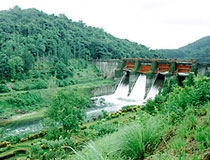
Peruvannamuzhi Dam
The Peruvannamuzhi dam site set amid hills is a beautiful picnic spot. The reservoirs here provide facilities for speed and row boat cruises during which one can see the Smarakathottam - a garden built in memory of the freedom fighters of the region. Uninhabited islands, a bird sanctuary and a crocodile farm add to the charm of the place.
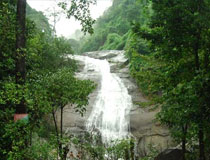
Thusharagiri Waterfalls
As the name suggests, land and water have struck an extraordinary kinship at Thusharagiri (mist capped peaks). The plantation destination that abounds in rubber, arecanut, pepper, ginger and spices, is also a trekkers delight. Trekkers start early morning from the second waterfall on the hills and climb up through the pristine dense evergreen forests teeming with exotic birds and animals to reach Vythiri in Wayanad district by evening. Getting there
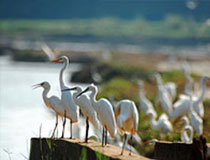
Kadalundi Bird Sancuatry
The Kadalundi Bird Sanctuary is spread over a cluster of islands in a scenic area surrounded by hillocks where the Kadalundi River flows into the Arabian Sea. The place is locally known as Kadalundi Nagaram. This virgin land is the abode more than a hundred species of native birds and over 60 species of migratory birds, like seagulls, terns, sandpipers, sandplovers, red and greenshanks, turnstones, that flock here in large numbers from November to April. A hillock nearby, which is 200 m above sea level, offers a splendid view of the river mouth and the sea. Kadalundi is also known for a wide variety of fish, mussels and crabs. The mangrove vegetation here shelters otters and jackels.



 Malayala Manorama
Malayala Manorama Mathrubhumi
Mathrubhumi Kuwait Times
Kuwait Times  Chandrika
Chandrika Deshabhimani
Deshabhimani Veekshanam
Veekshanam  Gulf Madhyamam
Gulf Madhyamam


